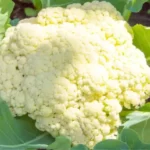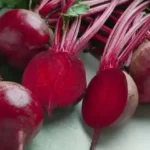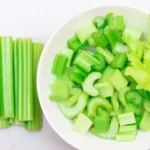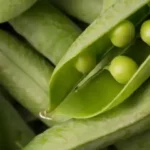Hey there, backyard growers! Do you choose the best companion plants for eggplant to boost your crop and see some awe-inspiring results? Then perhaps it’s time to try this ancient practice and reap the rewards. This unique growing technique can help take your eggplant to the next level by providing the perfect growing conditions, proper nutrients, and outstanding pest control.
Some of the most common companion plants for eggplant are marigolds, mint, carrots, peppers, legumes, beans, tarragon, and onions. Keep eggplants away from fennel, geraniums, pumpkins, corn, melons, or tomatoes to prevent detrimental effects.
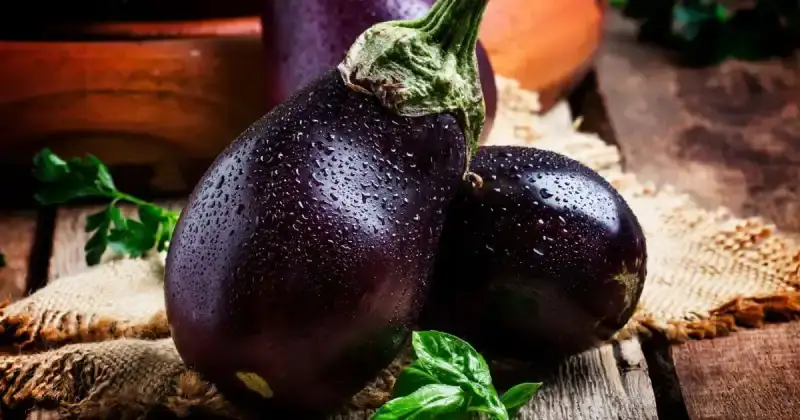
Growing eggplant is a wise choice because this vegetable (botanically a berry) contains an extraordinary antioxidant called Nasunin. Research indicates Nasunin fights oxidative stress and inflammation in the body while helping you absorb iron.
In this article, I’m excited to explore my tips for growing fabulous eggplants with the magic of companion planting. First, imagine a garden overflowing with robust crops, each flourishing with a bountiful harvest and cultivated near friendly garden neighbors.
Then, with my expert guidance, you can create the ultimate eggplant paradise in your space that would make any productive gardener proud. So, let’s embark on this thrilling journey of companion planting together and discover the many wonders it can bring to your backyard garden.
Humble Highlights
- Discover the 6 key benefits of companion planting that enhance growth in your garden – even if you’re a complete beginner!
- Save money by knowing what one flower will help attract beneficial pollinators to your eggplant so you can build a garden that produces healthy crops with generous harvests!
- Save time by planting these 12 unique and friendly eggplant companions to boost eggplant production.
- Learn the 5 main vegetables you should avoid growing near eggplant so you can help keep damaging pests and diseases away – AND keep your sanity!
What Is Companion Planting
Companion planting is a fantastic way to elevate your garden’s aesthetics and productivity. This ancient gardening art form involves strategically placing different plants near each other, aiming to improve the health and yield of your crops while keeping harmful pests and dangerous diseases at bay.

Companion planting has many benefits, from using low-lying plants that help suppress weeds and conserve soil moisture to encouraging insects that help promote pollination. Certain companion plants can also emit beneficial chemicals into the soil, improve the flavor of your crops, and even serve as “trap crops” to distract pests away from your primary veggies.
And let’s not forget the incredible power of legumes in fixing nitrogen in the soil, making these plants great companions for heavy-feeding varieties like corn, broccoli, cauliflower, tomatoes, squash, and cucumbers, to name a few. 1
Therefore, choosing your plants wisely and thinking about every seed you sow can help your surrounding garden grow and develop to its fullest potential. By carefully selecting plants that complement each other, you can create a garden that is truly greater than the sum of its parts.
What Are The Benefits Of Companion Planting
Several of the most expected benefits of companion planting include:
- Attracting Pollinators
- Pest Repellent
- Growing Produce In High Places: Trellising Plants
- Nitrogen Fixation: Conversion For Plant Growth
- Deliciously Fragrant: A Sensory Add-On
- Ground Cover
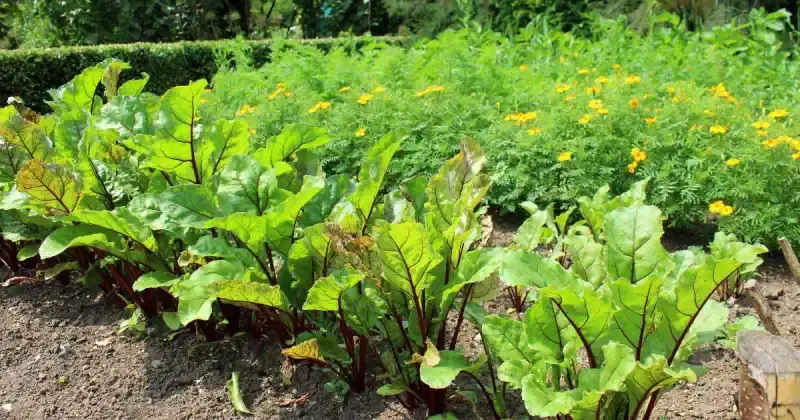
Let’s look at each to see how they can improve your growing area.
Attracting Pollinators
Companion planting can help boost crop yields by attracting beneficial pollinators. By planting rows of perennials, you create a haven for helpful insects like bees, wasps, butterflies, ladybugs, dragonflies, and even birds that are crucial in pollinating your garden. These natural helpers improve your plants’ health and increase your crops’ output. 2
Here’s a great video detailing how planting Borage, a beautiful blue annual, lures pollinating bees into your garden like a magnet. The great thing about Borage is that it is self-seeding. So once it establishes itself in your growing space, you will likely not need to reseed.
Another great thing about companion planting is that you can intermix annual plants within your vegetable rows, so you do not have to sacrifice extra space. This way, you can have a beautiful, diverse garden that produces more food while maximizing garden space.
Remember, plants that need pollination can’t reproduce on their own or even produce fruit without a viable way for pollen to be distributed from one plant to another. Therefore, to have efficient and fast pollination in your growing space, inviting the right insects into the garden is crucial for nature and your harvest.
Honey bees are one example of helpful pollinating insects everyone knows. These winged helpers are great matchmakers in the garden, pollinating roughly 100,000 plant species.
One plant you can sow in your garden that is a surefire way to lure honey bees is Borage. Borage is a gorgeous blue star-shaped bloom that draws bees like crazy. Interestingly, if you grow strawberries in your garden, plant Borage as a companion plant, as this “power flower” will help increase the health of your strawberry plants while providing tastier, juicier produce.
Pest Repellent
While companion planting invites beneficial insects into your space, it also helps keep unwanted pests away. Lavender, basil, and mint are great options to sow in your garden to help avert damaging insects. These plants emit intense aromas that help repel bugs and pests, keeping crops safe. In addition, companions such as these herbs help create a natural and invisible barrier, helping to keep your plants healthy and protected.
Growing trap plants are another companion method where damaging insects are deterred and lured to a particular plant to help keep them away from other, more valuable ones in your garden. To reap this crucial and protective benefit, grow different types of plants near each other that mutually benefit each other.
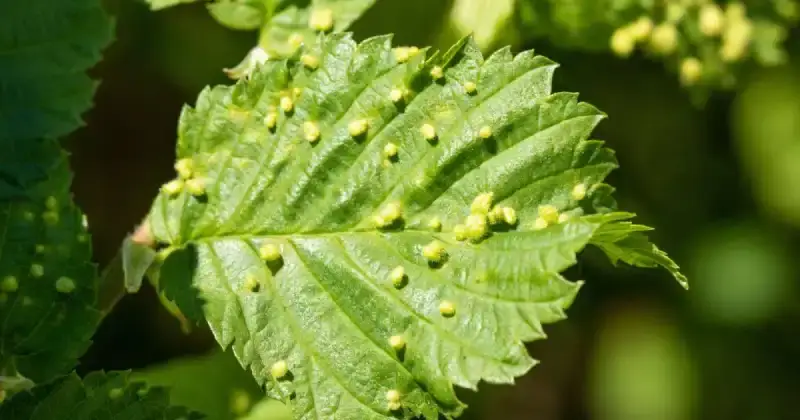
Growing Produce In High Places: Trellising Plants
Trellising is a tried-and-true vertical growing method for maximizing your garden’s capabilities. With companion planting, you enjoy the benefits of improved growth, pest control, and soil enrichment while utilizing other plants as a natural trellis that helps save valuable space in your garden.
In addition, this technique helps other crops flourish by producing more and makes the most of your garden’s potential by freeing up space for other, lower-growing plants.
Tomatoes, in particular, benefit significantly from trellising as it prevents fruit from rotting on the ground and makes it easier to spot and harvest this popular backyard fruit. Other crops that can benefit from vertical trellising include pole beans, peas, melons, cucumbers, squash, and pumpkins. 3
Vertical trellising isn’t just about manufactured structures like cattle panels, wooden lattices, and metal cages. A sturdy trellis supporting your vining plants can be as simple as growing common vegetables like corn.
The Three Sisters of gardening is an ancient growing practice mastered by the Native American culture. The intercropping of the vegetable trio of corn, squash, and pole beans allows each plant to be nourished and supported by the others. In this case, corn can act as a good source of shade as well as a natural trellis for your pole beans.
This friendly companionship adds a more natural look to your garden and allows you to grow multiple crops of different types in one space.
Nitrogren Fixation: Conversion For Plant Growth
Nitrogen fixation converts molecular nitrogen (N2) into nitrogen compounds usable for plant growth. This activity can occur naturally, through industrial processes, or naturally through the actions of microorganisms. However, only specific plant species can obtain nitrogen through biological nitrogen fixation with the help of soil microorganisms.
Nitrogen fixation happens in the roots and soil, where bacteria convert atmospheric nitrogen into usable compounds by plants. This procedure is vital for plant growth, productivity, and maintaining the nitrogen cycle within the environment. 4
Deliciously Fragrant: A Sensory Add-On
One of the more favorable benefits of companion plants is that they can enhance the growth and taste of the plants growing around them. For instance, marjoram, chamomile, and summer savory can release chemicals to help crops grow faster and taste better, leading to more bountiful and delicious harvests for home gardeners.
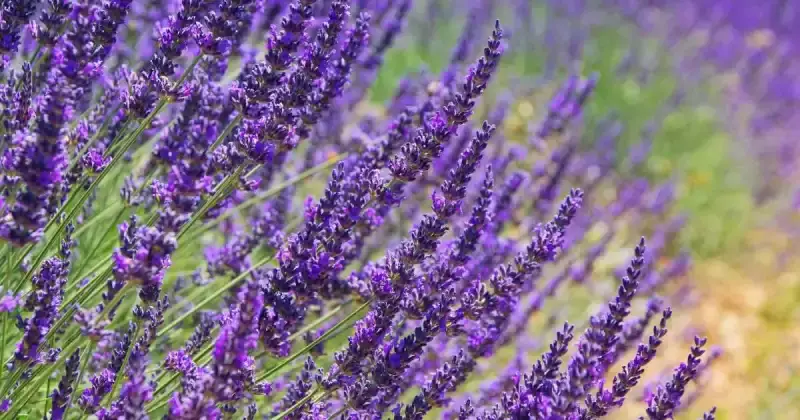
Other companion plants also offer a touch of fragrance with flavor. For example:
- Lavender has a calming scent.
- Basil is a popular herb in cooking.
- Mint is a popular choice when added to refreshing teas and drinks.
So, not only do these companion plants help with the overall performance of your garden, but they also add to the sensory experience of your vegetable plants.
Ground Cover
Companion planting also provides ample ground cover for your garden. Ground covers, such as clover seeds, rapeseed, hairy vetch, buckwheat, and crimson clover, serve as a protective blanket for your soil by keeping it moist and cool for plants that enjoy these conditions.
In addition, ground cover selections are both low-growing and fast-growing plants that can quickly spread in certain areas, making them ideal for covering and protecting steep slopes, shady areas, and raised beds over the winter from extreme weather conditions.
If you want to maximize the effort and energy you have already put into your garden, consider incorporating these ground cover plants. However, clearing out areas prone to perennial weed growth is essential before planting your ground cover crops, as these low-growing cover plants tend to struggle to compete against established weeds.
Companion Plants For Your Eggplant
Eggplant has several common companion plants, including:
- Marigolds
- Lamiaceae Family (Mint, Thyme, Oregano)
- Nightshade Family (Peppers, Tomatoes, Potatoes)
- Leguminosae Family (Legumes, Beans)
- Asteraceae Family (Tarragon)
- Amaryllidaceae Family (Onions)
- Chenopodiaceae Family (Spinach)
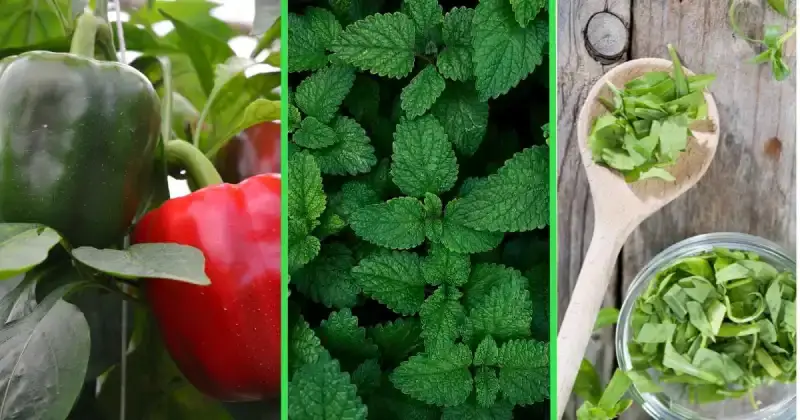
Let’s take a closer look and discuss why each plant is a friendly neighborly companion to your eggplant.
Marigolds
Marigolds are a fantastic addition to any vegetable garden, providing beauty and practical benefits for your crops. These charming flowers are inexpensive and famous for attracting pollinators without requiring much maintenance. Their strong scent is a natural deterrent to harmful insects, and they keep the soil free of damaging worms called nematodes.
Planting scented varieties is recommended to get the most benefit from your marigolds. But the best part is that these attractive flowers grow seamlessly with your vegetables, thriving in similar growing conditions. So with some pre-planning, you can easily incorporate marigolds into your vegetable beds or in pots that you situate accordingly around your garden. 5
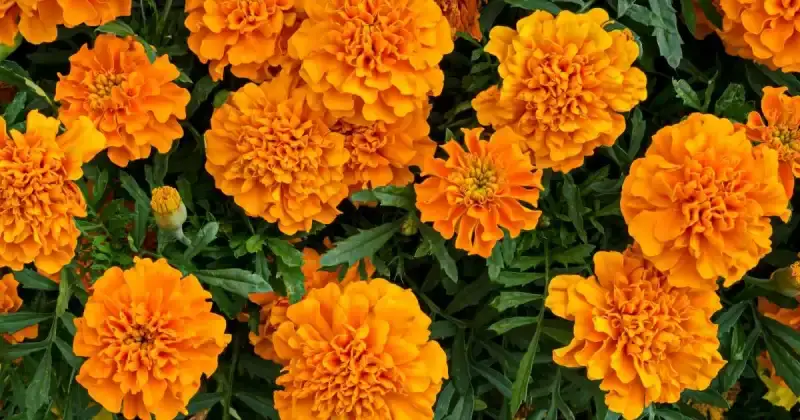
Lamiaceae Family (Mint, Thyme, Oregano)
Planting mints like peppermint and spearmint near your eggplants are great ways to control the harmful flea beetle population that can decimate your garden if provided the chance. However, it’s important to note that mint is an aggressive grower and can quickly spread and take over your garden if properly managed.
Thyme is a valuable companion plant for eggplants as it not only repels the damaging cabbage moth but also attracts beneficial insects and pollinators, like bees and butterflies, as mentioned above. Additionally, thyme can help protect your eggplants from worm infestations. And, if you’re looking for a low-maintenance ground cover option, wooly thyme makes a great choice.
With its strong aroma, the humble oregano plant repels aphids, cabbage moths, and the notorious spider mite. Still, this fragrant herb serves double duty, attracting beneficial insects such as honey bees and ladybugs.
Nightshade Family (Peppers, Tomatoes, Potatoes)
Planting eggplant with other nightshade family members like peppers, tomatoes, and potatoes is a great companion idea. These plants have similar growing requirements, so they’ll make friendly neighbors in your garden. And by planting your nightshade veggies in alternate rows or staggering them within the same row, you’ll give each plant just enough space to blossom fully.

Sweet and hot peppers make great companions for eggplant as they share similar requirements for sun, water, and rich nutrient-dense soil. In fact, if you sprinkle a bit of dry cayenne pepper on plants while they are still wet with morning dew, it will repel caterpillars.
Tomatoes are also commonly used as good companion plants for eggplant. However, you’ll want to ensure your tomato plants don’t grow tall enough to where they will effectively shade out your eggplant. A good rule of thumb is to sow your taller vegetables on the north side of your garden to help prevent this common issue.
This video delves into some great companion plant choices for eggplants, including some of the ones mentioned in this article. Remember, just a little pre-planning can make all the difference in growing delicious eggplant in your backyard garden.
Leguminosae Family (Legumes, Beans)
Growing annual legumes, such as peas and beans, near your eggplants can be incredibly beneficial. These plants work wonders by releasing extra nitrogen into the soil and improving soil fertility. This extra nutrition, in turn, is welcomed by your eggplant and helps it grow stronger and healthier.
Like above, you can grow these taller legumes on the northern side of your garden, or you can place your eggplants in the forefront of the garden and alternate rows of legumes with rows of eggplants to avoid any excess shading.
Growing pole beans alongside eggplants can also be an excellent idea. Pole beans, also known as one of the “Three Sisters Plants” (beans, squash, and corn), can provide ample nitrogen in the soil.
This nitrogen helps improve soil fertility, promoting healthy growth for your eggplant. It’s like hitting two birds with one stone. Planting eggplant and pole beans together can give you a more abundant harvest without worrying about nitrogen deficiencies occurring in the soil.
Asteraceae Family (Tarragon)
Tarragon, a beloved and aromatic herb, is another excellent addition to your eggplant garden. Not only does it enhance the growth and flavor of the eggplant, but tarragon also provides a wonderful fragrance throughout your garden. In addition, this herb species is a perennial, meaning it will come back year after year, making tarragon a low-maintenance and cost-effective addition to any garden.
As a member of the Asteraceae family, tarragon is well known for its bold, sweet, and unique flavor, making it a staple in many kitchens around the world. Incorporating tarragon into your eggplant garden benefits your eggplants and your taste buds. 6
Amaryllidaceae Family (Onions)
Onions make wonderful neighborly companions for eggplant. Onions do not interfere with the eggplant’s absorption of vital nutrients in the soil. Instead, these two plants complement each other’s growth.
With their aromatic smell, all varieties of onions serve as a natural pest deterrent, keeping away insects that may otherwise damage your eggplant. This makes your garden healthier and more productive while lessening the chances harmful insects will invade your green space.
Chenopodiaceae Family (Spinach)
Spinach and eggplant are a match made in gardening heaven. Both plants love well-drained, fertile soil that is kept cool and moist throughout their growing cycle.
As temperatures warm during the beginning of summer, eggplant can provide welcome shade for spinach, helping this famous leafy green to stay cool and comfortable while extending the growth cycle. Conversely, spinach helps retain soil moisture for the eggplant.
Plants To Avoid Growing Near Eggplant
Just as important as knowing what the best eggplant companion plants are, it’s also crucial to identify some of the worst. Some of the most common plants you’ll want to avoid growing near eggplant are:
- Fennel
- Geraniums
- Corn
- Mellons
- Pumpkins
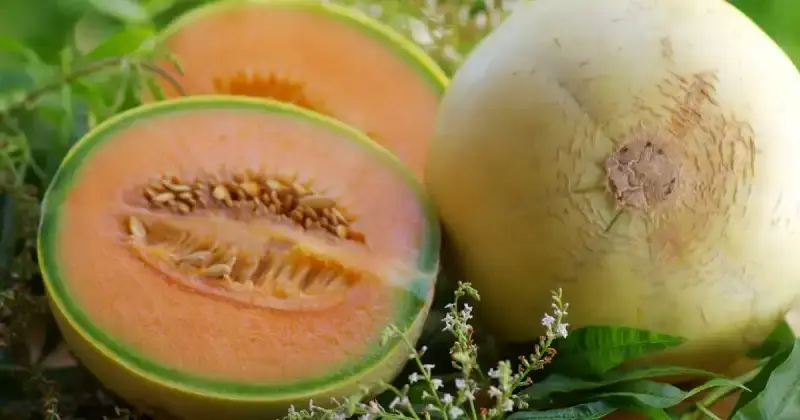
While companion planting is a great way to boost your eggplant crops’ health, vitality, and production, it’s also essential to understand the potential drawbacks of sowing particular veggies nearby. As an inherently delicate plant, eggplants are especially susceptible to pests and diseases that seek to do it harm. Therefore, care should be taken when selecting the right plants to grow alongside them.
Fennel
One plant to avoid near your eggplant patch is fennel. Fennel, known for stunting the growth of other neighborly plants and even causing their death, is best grown in a dedicated garden area or by itself in a container.
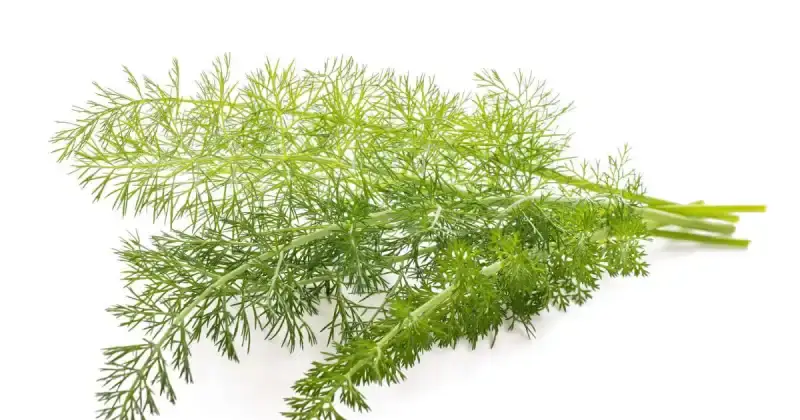
Geraniums
Geraniums can host diseases similarly harmful to eggplants, such as leaf blight and root rot. So, to keep your eggplant healthy and lessen the chances of illness, it is best to avoid planting geraniums nearby.
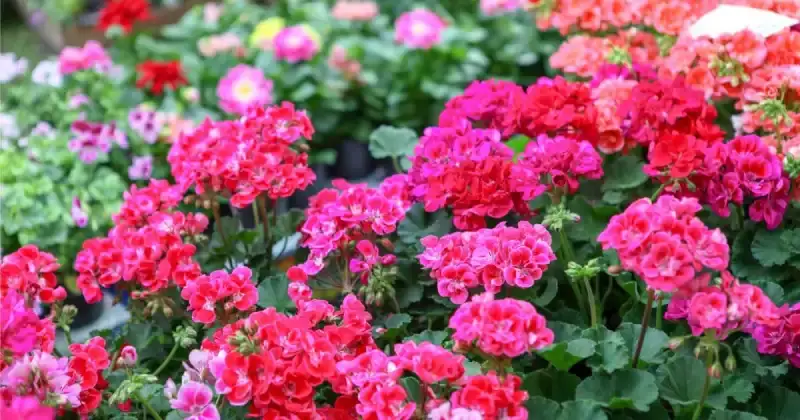
Other Plants To Avoid
Other plants to avoid near eggplant include heavy feeders like corn and melons. These “hungry” plants will compete with eggplant for nutrients and, as a result, leach valuable nutrients from your garden soil. While pumpkins are not necessarily harmful to eggplants, they are still not ideal companions for the same reason.
Members of the brassica family, like broccoli, cauliflower, and cabbage, are also considered heavy-feeding plants and enjoy neutral pH soil for optimum growth and production. On the other hand, Nightshade family members, like eggplant, flourish in slightly more acidic soil, making the pairing between these two veggie families less than ideal. As good practice, I always keep my eggplant and brassicas separated in my garden for this very reason. 7
Conclusion
Although sometimes considered a niche crop in the backyard garden, eggplants have their place in the humble gardener’s heart. Known for their deep purple hue, you, too, can grow healthy and abundant eggplants by incorporating the ancient practice of companion planting into your green backyard space.
Marigolds, tarragon, spinach, annual legumes, mint, thyme, peppers, tomatoes, and onions are all wonderful companions that can help enhance growth, deter pests, and enrich the soil for your eggplants.
But be mindful of the potential drawbacks of other not-so-neighborly plants, such as fennel, geraniums, and heavy feeders varieties like corn, melons, and pumpkins. Likewise, brassicas, like cauliflower, broccoli, and cabbage, should also be grown in a different area of your garden.
Do you currently plant companion plants with eggplant? Did I miss a vegetable you’ve had great success growing next to your eggplant crop? Join the discussion and meet me in the comments below to let me know!
SOURCES
- Hudson Alpha Institute For Biotechnology – Nitrogen-Fixing: Healthy Soil, Happy Plants, Full Bellies
- National Library Of Medicine, National Center For Biotechnology Information – The Worldwide Importance Of Honey Bees As Pollinators In Natural Habitats
- United States Department Of Agriculture – The Three Sisters Of Indigenous American Agriculture
- New Mexico State University, College Of Agriculture, Consumer, And Environmental Sciences – Nitrogen Fixation By Legumes
- Royal Entomological Society – Companion Planting To Attract Pollinators Increases The Yield And Quality Of Strawberry Fruit In Gardens And Allotments
- Wikipedia – Tarragon
- Indiana Public Media – Eight Fascinating Facts About Eggplant

